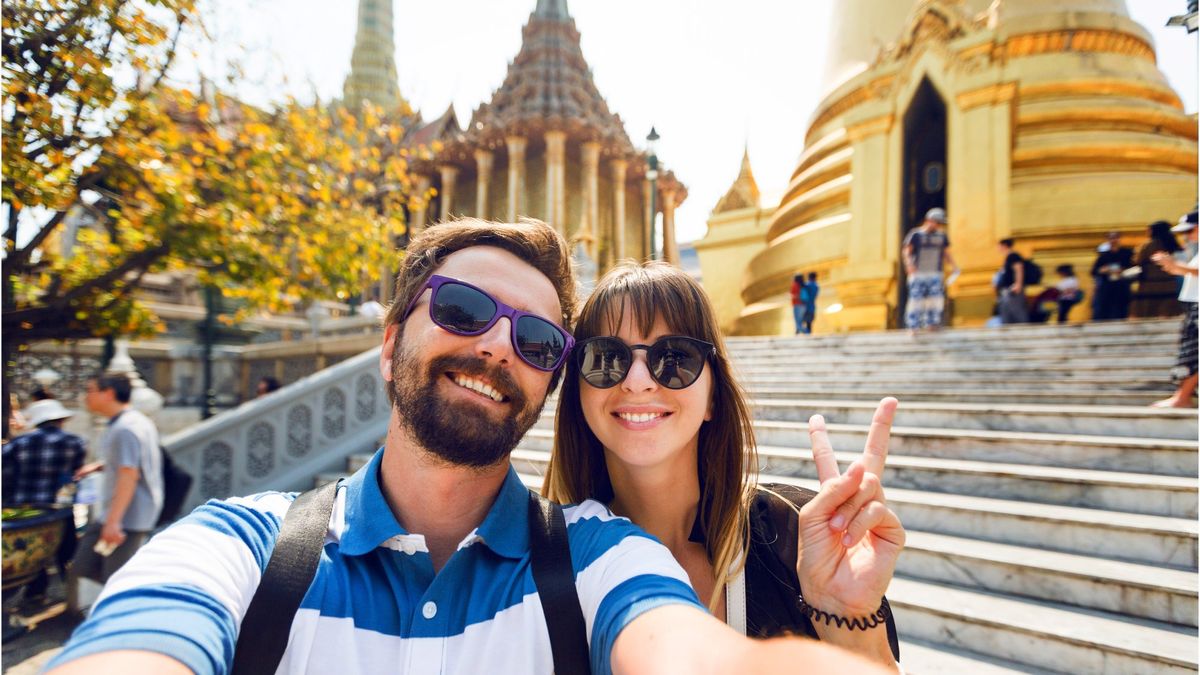Angkor Wat, Cambodia’s sprawling 12th-century religious complex and Unesco World Heritage Site, is known both for its cultural significance and the crowds it can draw, especially during the famed sunrise at its namesake temple.
Yet the slow return of Asian travelers has meant that the growing number of visitors from other regions, primarily Western markets, have been able to reap the benefits of smaller crowds at such popular sites.
Sarah-Leigh Shenton, marketing director at Red Savannah, said ticket sales to Angkor Wat are at only 45% of their prepandemic levels, a drop due largely to the absence of Chinese tour groups.
Some Asian markets have been slower to recover since the pandemic — some because they took longer to reopen to travel and others because of currency weakness and economic instability.
Those challenges have prompted many travelers from China, Japan and Korea, the countries that make up the region’s core visitors, to travel closer to home.
“Historically, the top three outbound source markets have been China, Japan and Korea, in that order, with China leading the way by some margin,” said a spokesperson from DidaTravel, a Shenzhen, China-based B2B travel distributor.
DidaTravel has seen a 200% year-over-year increase in China to Japan bookings and a 65% increase in Korea to Japan bookings, with Japan its No. 1 destination. The Japanese, however, have still not returned to their normal travel patterns.
“Japan’s challenges are a different case; what is hampering the recovery there is the historically very low value of the currency, making it very expensive for Japanese people to travel internationally,” DidaTravel said.
And while Chinese travelers are heading to cities like Tokyo to take advantage of cheap shopping, China, one of the world’s last countries to reopen to tourism, is still only about three quarters of the way back in terms of absolute outbound travel numbers, although they are up significantly compared with last year, DidaTravel said.
China Youth Travel Service, a destination management company based in Guangdong, China, has seen similar patterns, noting that Asians are “actively back to travel” this year but that domestic travel or more local travel “is the main traffic due to the economy not yet fully recovered in most areas. Cross-continent [travel] is too expensive at this time.”
Meanwhile, Asia bookings are booming for a number of suppliers serving English-speaking markets, particularly to Japan and countries in Southeast Asia like Vietnam, Cambodia and Thailand.
Alexander + Roberts said travel to Asia in 2024 is up 41% over last year, primarily led by bookings for Japan, Vietnam and Thailand, while 2025 bookings are up 34% compared with 2024 bookings at the same time a year ago.
Luxury Asia specialist Remote Lands said that in addition to Thailand, Cambodia, Laos and Indonesia, bookings to Japan are strong, making up a third of its overall business. But while many North American travelers are flocking to Japan for the same reasons as Chinese travelers, a weaker yen doesn’t completely rule out higher prices there.
“You can get a train ticket more reasonably, but everything else related to luxury — hotels, cars, drivers, guides — the prices have doubled, tripled,” said Catherine Heald, CEO and co-founder of Remote Lands. “So it’s not the bargain that people expect it to be.”
Cruises on the Mekong River, which primarily sail through Vietnam and Cambodia, are doing well for AmaWaterways, with president and co-founder Rudi Schreiner saying departures are full from November through April.
“We are seeing a very, very strong recovery,” Schreiner said of its Southeast Asia itineraries, adding that high demand drove the company’s decision to build a second ship for the Mekong, the AmaMaya, slated to enter service in 2026.
Scott Avera, president of Alexander + Roberts, said traveler habits are shifting. Coming out of the pandemic, travelers tended to book one destination and extend their stay. Now, travelers are booking multiple destinations in Asia for the same extended trip length.
“In 2025, we’re seeing back-to-back packages. In Vietnam, Cambodia and Thailand, people are taking two tours and putting them together: Japan and Korea, China and Nepal,” Avera said.









